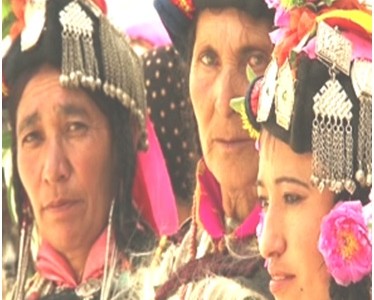
Alexander’s Lost Army : The Brokpa Community of Ladakh
 Editors Note: For them ethnicity defines status. They claim to be of pure Aryan stock and myth has it that they trace their genetic history to the members of the Alexander’s army which stayed back. Nestled in 4 villages of Ladakh, this 1800 strong Brokpa community has rather successfully been able to keep its gene pool intact, using strong social sanctions and rules. The article is based on the research done by Chaitali Mukherjee, the award winning documentary film maker, for her film Brokpa- The Outsider. The stills are from the said documentary. Probashi is extremely grateful to Chaitali for sharing her research for this article.
Editors Note: For them ethnicity defines status. They claim to be of pure Aryan stock and myth has it that they trace their genetic history to the members of the Alexander’s army which stayed back. Nestled in 4 villages of Ladakh, this 1800 strong Brokpa community has rather successfully been able to keep its gene pool intact, using strong social sanctions and rules. The article is based on the research done by Chaitali Mukherjee, the award winning documentary film maker, for her film Brokpa- The Outsider. The stills are from the said documentary. Probashi is extremely grateful to Chaitali for sharing her research for this article.
Some 130 kms north-east of Kargil, on the Line of Control , there are villages of Dah, Hano (Hano Goma and Hano Yogma), Darchik and Garkon. These villages are situated on the northern bank of Indus on the road to Baltistan. Here is found a community which for thousands of years have lived in isolation in their inascessible villages. They have distinct features - tall and statesque, with green eyes, high cheek bone, fair with flawless skin and some with blonde hair. They consider themselves to be the pure bloodline of the Aryans. The community also claims to be the direct descendants from the Alexander’s Army, some of whom reportedly stayed back after Alexander abandoned his campaign at the banks of river Indus in 326 BC.
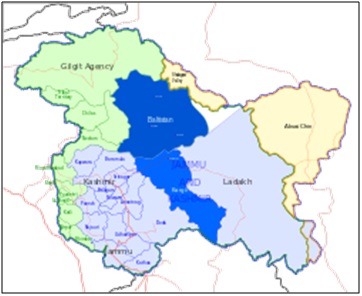
Brokpas have their counterparts with similar looks and features in the Pakistan Occupied Kashmir (POK) in Baltistan region and are collectively called the Dards. The blue shaded area in the map is the Dard region traversing POK and Kargil. Now very few pockets of isolated community with pure bloodlines, language and culture remain. Brokpas are one such tribe. Another interesting Dardic tribe are the Kalash in POK , who still maintain vedic rituals and idol worship. They are extremely fair, blonde and have blue eyes. They are known as the white tribe. They are 4000 in number.
They are the 1800 strong Brokpa tribe. The community calls itself Minaro (meaning Aryan) , but are popularly known as Brokpa. They are part of the Dards some of whom are found in islolated pockets in India and POK ( see map ). Brokpas have maintained their purity of race and culture without being hostile to the influence from the outside world. Strong social rules and a pride in their ancestory has helped preserve their way of life and genetic uniqueness.
Given the inhospitable terrain, for thoursands of years the Dard region remained out of bounds, and there were wild guesses and myths about the tribes including they being cannibalist. The first contact of the western world with the Dardic people (to which the Brokpas belong) was in 1830 by Godfrey Thomas Vigne, the British maveric explorer. In his account Vigne describes these people of having distinct European features, most of them possesing either blonde or red hair with blue eyes and extremely fair skin. Vigne propounded the theory that either these people were remanents of the Alexander’s Greek army or the original Aryan race from which all the Indo-European people descended. The first reference to the Brookpa tribe is found in the book The Jammu and Kashmir Territories (1875) by Frederic Drew, a geologist in the employ of Maharaja of Kashmir.
The mystery and romance of this forgotten tribe attracted the award winning documentary film maker Chailtali Mukhejee, who went on to make the highly acclaimed film on the tribe titled Brokpa-The Oursider. This article is based on her research and field work for the documentary.
To know more about the Brokpa the documentary team spoke to Dr. Veena Bhasin, Professor of Anthropology, University of Delhi, who has done seminal work on this ethnic group and is a known authorirty . According to Dr Bhasin, the tribe has been present in this region of Ladakh since 5000 years. They claim to be the first settlers and trace their migration from Europe to Gilgit and then eventually to their present location. While this is preserved in the folklore, there is no other scientific proof to this claim and no credible history of the Brokpas has been written. Brokpas remain isolated and closeted in their four villages. Any inter mixing with outsiders by way of marriage and kinship is forbidden.
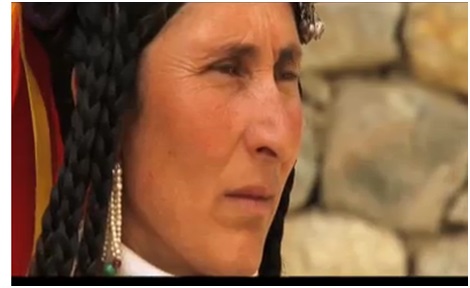
Brokpa’s have very sharp features- aquiline nose, high cheek bones, green eyes fair skin and statuesque body structure
With extensive library research and inputs from experts, the documentary team was ready for the recee and actual shoot. The team started from Leh towards Btalik on a 130 kms journey by road, passing through numerous army chekposts. The team camped for a week at Diama, a small town about 25 kms from Darchik , the most accessible Brokpa village. From here day long field trips to the Brokpa villages were made, each almost 40-50 kms apart on desolate winding mountain roads. Chaitali says “ when you doing a documentary you cannot go with a fixed script, you only go with your research. When you reach the locale , the mind starts to structue the script on the fly based on what you see and learn on the ground.”
The camera panned on the handsome and wizened face of Konchuk Thorpa , the Khas-pa (an importnt person, a teacher) of Darchik village. Konchuk is reputed to have immense knowledge about the tribe. The sound recordist inched closer as Konchuk started to speak “Its written in our history called “Dizum Shuzum is a log of our 2000 year old existence. It is account of that time when there was a big sea in this region from Ladakh to Tibet”. He continues with the story of how three brothers - Galo, Melo and Dulo came to Ladakh and while wandering in search of a new pasture land, they reached the sea. It is said that a grain which had got stuck in the shoe of one of them, fell to ground and multiplied into a good crop of grains. The brothers stayed back on this land. They were Aryans so it is said. The descendents of the three brothers are today known as Brokpas.
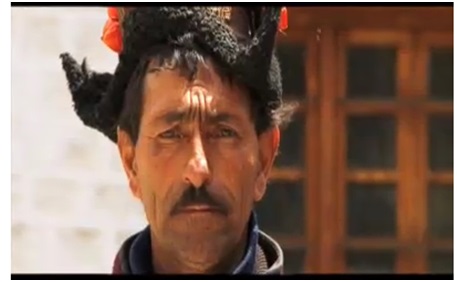 The seclusion of the tribe over thousands of years has preserved their original looks which is totally different from others in the region. They appear ethnically distinct from Ladakhis or Kashmiris. They look statesque and attractive, which is further exentuated by what they wear.
The seclusion of the tribe over thousands of years has preserved their original looks which is totally different from others in the region. They appear ethnically distinct from Ladakhis or Kashmiris. They look statesque and attractive, which is further exentuated by what they wear.
A Brokpa tribal is identified by a colorful headgear called Tepi that has various colorful props attached, embellished with colorful berry flowers. The Tepi is also an instrument that wards evil eye. The women wear heavy metal, gold and silver jewellery along with full length sheep skin capes and sheep wool pheran . Old metal coins are part of the accessory. The men mostly wear maroon gowns with cummerbunds.There is a belief that metal worn on the body prevents sickness. Konchuk explains “ We had no medical facilities in the past, so each prop on the head gear has some medicinal purpose. The seven colored ribbon wards any ailment caused by the Sun or eclipse. The silver brooches ward off planetary influences, the peacock feather wards off paralysis”.
Brokpas are practicing Buddhists, but retain concurrent belief in God Lha, to whom they sacrifice goats during their festivals. Konchuk Thorpa speaks on camera “ before Buddhism there was a religion called Bon here, we find the proof of it, as we get remains when we dig, as they used to bury the dead. We also get some rock etchings, no one has told us this but we know about it”. Presently the Brokpa cremate their dead.
Bropkas have always been a proud community. Kai Friese in the book Written for Ever mentions of a legend wherein Brokpa chieftan Shali choose death ,rather than submit to the Tibetian King of Ladakh’s demand for begaar(free labout), the impressed (or frustrated) king got a stone inscription laid which gave a backhanded compliment ‘ Dogs will not carry a load, Brokpas wll not perform begaar’. Brokpas never had to do free labour after that.
Brokpa have almost a fanatical attachment to purity. Mountains, trees, water and flowers are considered very pure. Thus every Brokpa household grows flowers. The flowers are considered auspicious and are worn on head gear. Tashi Dawa, the headman at Dharchik holds a berry flower in front of the camera “ this is called Montho or Shoklo, all married people put it, it signifies our love and prosperity and is considered auspicious”. The Brokpas consider Juniper as pure and its smoke as the cleanser of all evils.
The Brokpas have clean houses, the hearth is considered the purest place in the house. A woman who is unwell or has recently given birth to a baby is not allowed to cook or enter this room. Utensils are polished and displayed as anything of metal is considered pure. The rooms have pillars that are considered abode of the God Lha The fear of getting polluted have driven them to be Vegans. They eat Goat’s meat during festivals, otherwise all kind of meat, egg, milk and milk products are out of their menu. This is an unique practice in this climate and altitude. The Brokpas eat what grows out of the earth. They maintain small kitchen gardens where they grow vegetables herbs, fruits, wheat and barley .
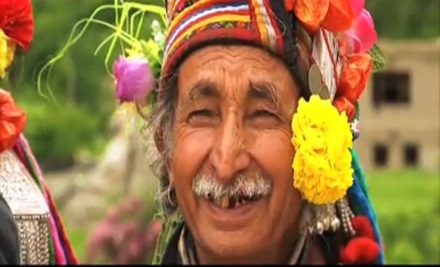 The documentary team is at Tashi Dawa’s house. He introduces his immediate and extended family as the camera slowly pans. “ This is my brother in law, she is my sister, besides her is my sister in law, behind them sit my niece, my uncle , my wife and my religious brother”. They have all congregated to settle a family dispute, which Tashi Dawa in his capacity of the village headman would preside as the judge. Tashi has been the headman of Darchik since 1972. As Tashi Dawa gets busy with his arbitration duties, Konchuk Thorpa takes over as the interlocutor for the documentary team.
The documentary team is at Tashi Dawa’s house. He introduces his immediate and extended family as the camera slowly pans. “ This is my brother in law, she is my sister, besides her is my sister in law, behind them sit my niece, my uncle , my wife and my religious brother”. They have all congregated to settle a family dispute, which Tashi Dawa in his capacity of the village headman would preside as the judge. Tashi has been the headman of Darchik since 1972. As Tashi Dawa gets busy with his arbitration duties, Konchuk Thorpa takes over as the interlocutor for the documentary team.
The camera focuses on the arbitration while Konchuk explains “ this man has cheated on his wife but the family and the tribal chief are pacifying the woman and are asking them to stay united and not take a divorce”. In Brokpa society divorce can be given as many times and new partner can be sought. There is no taboo in changing partners. A small issue in marriage is sorted by the family, however a big one , as in the case witnessed by the documentary team, village chief and elders are called in to intervene. If either the man or woman is found at fault, he or she is fined.
To maintain racial purity, endogamy is sanctioned , however with certain prescribed rules. Konchuk Thorpa explains “ Marriage can happen within the family, but we have to wait for three generations on both sides, like can’t marry sister and her daughter but marriage can happen with sister’s grand daughter”. Marriages within a closed population is known to lead to associated problems of sterility, genetic diseases etc. , and in many cases is a reason for dwindling numbers. Prof Veena Bhasin agrees “ In 1991 there were only about 1900 Brokpas concentrated in these 4 villages. They are very particular about race and ethnicity, and therefore internarry. If any girl marries outside caste or ethnic group, she is not allowed to enter the village”.
Marriage is the most important institution in this society, for ages this institution has kept the tribal identity intact. The documentary team was invited by Rigzen Yandol to her friend’s marriage in Hano village about 30 kms from Darchik. Rigzen is all decked up, the team follows her with cameras trained. A Brokpa marriage would probably get captured on celluloid for the first time ever. This was a eureka moment for the team, they had been lucky that a Brokpa marriage had coincided with the shooting schedule.
On reaching the brides’s house , strain of flute and drums was heard from inside. Rigzen tapped the door “ Hey open up, we have come from the family of Galo, Melo, Dulo”. The forefathers are evoked in the introduction, a common link established.
There lots of people, most in traditional attire are seen. Songs are being sung . The groom’s side sing “ I am from your tribe, I have come to marry your daughter” . The bride’s side sing in response “how do you look, what’s your tribe, where do you live, what do you eat?” After they get the answers both sides agree and they let the groom enter. The bride and groom sit together and various formations are made in front of them like the swastika and the chakra. All the hymns are in Brokskat, the language spoken by the Brokpas and only understood in these four villages. The songs and rituals have come down through oral tradition since the tribe does not have a script . The songs are the repository of the tribe’s history.
Their is paucity of research to decipher this unique language and to understand its origin and its source country.
Brokpas who call themselves Aryan are confused about their origins. The confusion was also created by entry of Germans who came around 1938 in search of the pure Aryan race, on orders from Hitler. Tashi Dawa the village headman puts things in perspective “ some say we came from Gilgit, some say from Rome, some say we were remnants of Alexander’s Army, but we say we are Aryans” Tashi further reiterates “ our grandparents told us that Germans used to come to our village and live here”.
| German women in search of Aryan Genes In his 2006 documentary titled The Aryan Saga, Sanjeev Siwan tells the story of German women coming to Brokpa villages to have babies with Brokpa men. These women subscribe to the belief that the Brokpa are the only remaining pure Aryans. In the documentary a German lady is interviewed, who is in Darchik and has a tryst with Tsewang Lhundup, a Brokpa man, with the intent to have his baby. She is candid in admitting that there have been other German women before her and definitely she is the not the last one. Tsewang Lhundup is also show in the film and is quite open about his liaison. Such pregnancy tourism is paid for, and is organised. Major HPS Ahluwalia, the first Indian to climb the Mt Everest, in his book Hermit Kingdom Ladakh (1980) mentions of meeting ‘ three sophisticated German ladies’ at a Brokpa festival. They had heard the Aryan stories and were, he says, ‘ in search of seed’. Kai Fraise in the book Written for Ever (edited by Rukun Advani) writes about his search of evidence regarding the phenomenon between the German women and Brokpa men, but finds no credible evidence. |
Veena Bhasin reflects “ I think the notion of being an Aryan has been put into their minds..by constant coming of foreigners and giving them undue importance. They have got used to the notion that they are a pure Aryan race. Some say that they are remnants of Alexander’s army, but there is no proof”.
| Claims of Greek connection We know of atleast five tribes in Kashmir , and the POK who claim to trace their ancestry to the stranded soldiers of the Alexander’s Army. While DNA tests have refuted the Greek DNA connect, there still remains doubt whether the entire Alexander’s Army comprised of Greeks or were there other ethnic as part of Alexander’s troops. If the latter is true, then DNA tests cannot be held conclusive for the Alexander connect. Kalash: The most intriguing is the “white tribe” who have blue eyes, blond hair and fair skin. This tribe lives in district of Chitral, POK, bordering Afghanistan in three valleys and number around 4000. They follow many Hindu customs, including idol worship in outdoor temples. In the past this group has faced persecution from the radical Islamists. Women are not behind the veil, and their choice is respected by society. There is a very strong myth that they are the descendants from the lost soldiers of Alexander, a belief which prompts the Greek government to development aid to the Kalash region. DNA Tests have revealed them to have a distinct genetic makeup but not necessarily Greek. Malana: This village which had remained cut-off from the rest of the world for thousands of years has developed its own language, social structure and also a unique governance structure based on democratic principles. Malana is located in the Kullu Valley of Himachal Pradesh and claims its ancestry from the soldiers of the Alexander’s Army who took refuge in this remote place and founded a village. Another claim is that they are the part of the Aryans who crossed into India. Malana residents even today live in a self imposed isolation and visitors are not allowed to touch any possession of the locals due to fear of pollution. Brokpa: The four villages in the Kargil district of Ladakh make a similar claim to Greek ancestry. However DNA analysis does not provide any evidence of this link. Brokpa are of Dardic origin, and have similarities with Kalash Burusho: live in Gilgit-Baltistan in Northern Pakistan. Burusho legend maintains that they descend from the village of Baltir, which had been founded by a soldier left behind from the army of Alexander the Great. DNA studies have not found any Greek markers amongst the Burusho. Pashtun: Genetic evidence supports a very small, 2% Greek genetic component among the Pashtun ethnic group of Pakistan. This is the only faint Greek link found amongst all the communities claiming Greek ancestry |
The Brokpa villages have seen unprecedented changes since the last two decades. The villages are located near the line of control, the fierce 1999 Kargil war disturbed their habitat for ever. Because of their inborn capacity for high altitude conditions, this tribe was very useful to the Indian Army . Konchuk Thorpa informs “We fought alongside the Army during the war without fearing for our lives. For six months no man in the tribe returned home during 1999 Kargil War,. We helped the Army in locating places, help them know this terrain, help them carry goods, we did all we could to save our country”.
Chewang Murup , who has worked for the Army adds “ The Brokpas don’t worry much about who is Hindu, Muslim, Buddhist, Sikh or Christian, we only believe in being loyal and honest to the land that gives us our daily bread.” A remarkable faith in the country and its system by a long isolated tribe.
The coming of Army has brought them closer to the outside world. Now there are good roads connecting the Brokpa villages . Chuski Dolma dreams of becoming a teacher .Rigzen Yangdol dreams of becoming a doctor. There is a facebook page called Aryan Students Association, Jammu purpotedly managed by the youth from Brokpa community who are studying in Jammu.
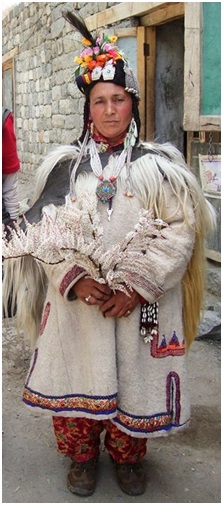 The new generation Brokpa has adapted to new things, they don’t shy away from education and modern way of life. Brokpa parents are very excited about getting the best education for their children. Hindi songs are extremely popular with the youth.
The new generation Brokpa has adapted to new things, they don’t shy away from education and modern way of life. Brokpa parents are very excited about getting the best education for their children. Hindi songs are extremely popular with the youth.
How long this tribe can hold on to its cultural roots is a question that plagues the minds of educated Brokpas themselves. The documentary team ask Sonam Palmo the first Brokpa lady who managed to study and become a teacher- “No, no I think its impossible”. However Veena Bhasin thinks otherwise “Its not that they are shunning these modern things, you know, I think they are choosy about that, whatever they feel does not interfere with their culture, they adopt it.”
Brokpas continue to be fiercely protective of their culture, their bloodline and their belief in their Aryan lineage. Science is still trying to find proof. Scott Turrow, the American author, in his book the Ordinary Heroes makes an insightful observation “Who are we but the stories we tell ourselves, about ourselves, and believe?” Why should Brokpas be any different?



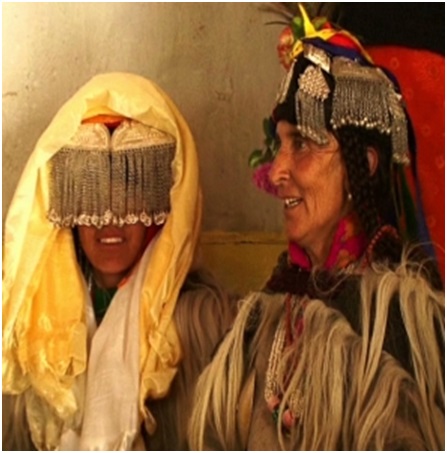
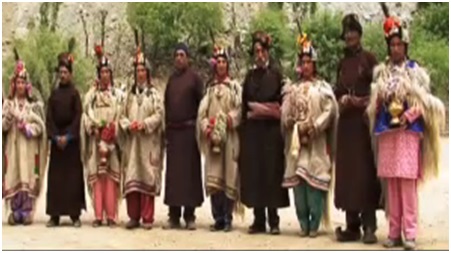


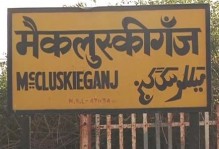

Very well researched and well witten. Enjoyed reading.
I enjoyed reading about these amazing people and seeing the pictures which were included in their story. I always love to learn new things and have found that if one seeks to know, one will always find what they are searching for. One of my facebook friends posted something about this culture and now I have learned something new. Thank you.